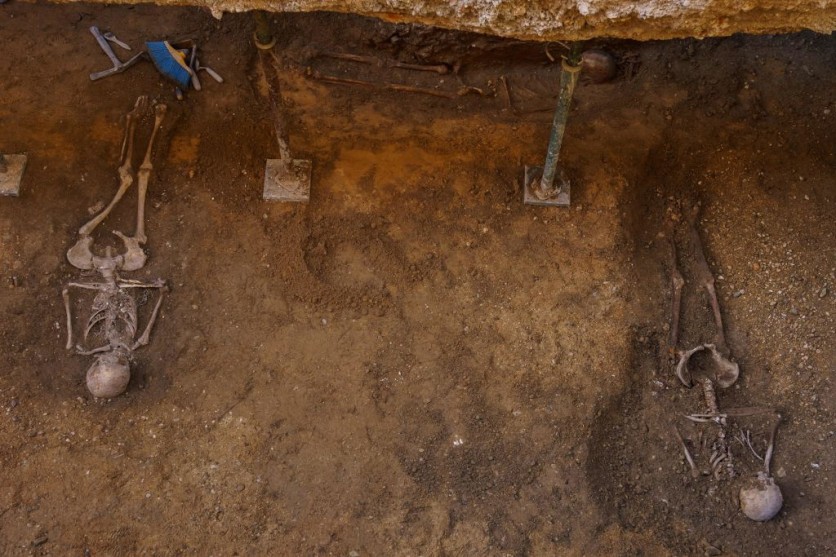Archaeologists in Spain have made a puzzling and creepy discovery, finding six skeletons of young men with their hands tied, face-down, and covered with stones in a cliff-side cave on the island of Gran Canaria, according to a report by Reuters.

Profound Symbolic Violence
In the mysterious Caleta de Arriba site, the remains were unearthed, raising the possibility that they existed prior to the 15th-century Spanish conquest of the archipelago located off northwest Africa.
Veronica Alberto, the excavation's leader, explained that the bodies did not undergo traditional burial rites, indicating a funerary practice steeped in profound symbolic violence.
Intriguingly, some of the men had their limbs bound with straps or bindings, and their lifeless forms were forcefully positioned on the rocky surface, with stones deliberately placed upon them.
The enigma deepens as the identity of these individuals remains unknown, leaving scientists eagerly awaiting the results of radiocarbon dating tests on the bones to ascertain the period to which they belong.
The site presents a peculiar anomaly, deviating from the conventional norms of burial grounds. It is noteworthy that exclusively male individuals were discovered, characterized by their robust musculature, implying a shared involvement in a specific form of physical activity.
Consequently, archaeologists are now considering different possibilities and thinking about the potential origins of the remains after the conquest. These origins could date back to the time period between the 16th and 18th centuries.
Severed Hands from Ancient Egypt
In a related discovery, archaeologists have found physical evidence of practice at an ancient Egyptian palace site. They have found 12 to 18 right hands buried beneath pits in the forecourt of Hyksos palace at Avaris.
The hands were discovered in three different pits in the area that would have been the palace's entrance court in front of the throne room. It is believed that the hands were not all fully intact and were interred together, making it difficult to determine the minimum and maximum number of individuals required to make up the remains.
Although the scholars were able to establish that the minimum ages of the hands were between 14 and 21 years, with the top age range being below 60, it was challenging to examine them forensically.
It is believed that the hands were likely to be part of a ceremony at the palace, giving onlookers a new viewpoint. Eleven of the hands were identified as male, with the 12th being undetermined, based on the sturdy structure of the bones and a morphological tendency for their index fingers to be longer than their ring fingers.
Both discoveries are raising questions about ancient practices and ceremonies, and more research and analysis are needed to fully understand the significance of these findings.
These peculiar burial practices shed light on ancient cultures' diverse and potentially ritualistic and even violent approaches toward the dead.

ⓒ 2026 TECHTIMES.com All rights reserved. Do not reproduce without permission.




